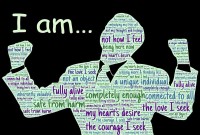- Home
- Business Processes
- Industry Knowledge
- Aerospace Industry
- Automotive Industry
- Banking Domain
- BFSI Industry
- Consumer/ FMCG Industry
- Chemicals Industry
- Engineering & Construction
- Energy Industry
- Education Domain
- Finance Domain
- Hospitality Domain
- Healthcare Industry
- Insurance Domain
- Retail Industry
- Travel and Tourism Domain
- Telecom Industry
- Leadership Skills
- eLearning
- Home
- Domain Knowledge
- Management Concepts
- Principles of Communication
Principles of Communication
Certain generally accepted truths or principles of communication are important to consider when communicating with others. These principles hold true for all people in every culture. By understanding these principles, you will experience greater communication effectiveness. An effective communication system is one that achieved its objectives. Communication is effective where there are no barriers to communication.
1. Principle of Clarity:
The message should be clear and complete. The communication should always be consistent with the objectives, policies, and programs of the enterprise. The idea or message to be communicated should be clearly spelled out. It should be worded in such a way that the receiver understands the same thing which the sender wants to convey. There should be no ambiguity in the message. It should be kept in mind that the words do not speak themselves but the speaker gives them the meaning. The message constitutes the core of the communication process. It needs to be formulated to suit the specific needs of the receiver and must be expressed in an intelligible way to have the desired objective. According to Wilbur Schramm, the message must fulfill certain conditions if it is to arouse the desired response in the receiver. The message must be so designed and delivered to gain the attention of the intended audience. A clear message will evoke the same response from the other party. It is also essential that the receiver is conversant with the language, inherent assumptions, and the mechanics of communication. Clarity should be there while communicating through verbal words or in writing.
2. Communication Is Constant
Humans are always communicating. Too often we think that if we are not talking, we are not communicating. You may not be communicating verbally, but your nonverbal communication is constantly displaying signs and cues that reflect what you are thinking and feeling internal. Successful companies, and their subsequent company and workplace cultures, have a very cohesive and collaborative workforce. The unity of a company’s employees encourages teamwork, and this has a big effect on productivity.
Communication in the office also reflects on the value of accountability and enthusiasm within an office. When an employee fails to communicate the minimum viable information, they are not assuming the full responsibility of the information being passed along.
3. Communication Is Transactional
The chief purpose of communication is the exchange of ideas among various people working in the organization. The process of communication should be helpful in an effective exchange of information. Communication can be viewed as a transaction in which the meanings of messages are negotiated between people. The transactional nature of communication encourages us to regard others and ourselves in a much more complex way. The transactional nature of communication creates a more other-centered awareness and sensitivity to others. No longer can we be limited to our earlier preoccupation with getting our message across. Instead, we shift our focus from self to others to participate equally in communication exchanges or transactions in which the receiver is regarded with greater sensitivity and respect.
4. Principle of Correctness
One can better understand or interpret the more accurate message. The guidelines for correct or accurate communication are covered under the principle of correctness. If the message is correct then its impact is also great and it also boosts the confidence of the sender. So, the correct use of language is essential in effective communication and it also increases the trust factor between the sender and receiver. The communication should be coherent i.e. both consistency and logic should be part of the sender’s message.
5. Communication Is a Process
The Greek philosopher Heraclitus said that you never step twice into the same river. What he meant was that a river is never exactly the same as it continually twists and turns, constantly changing in-depth and speed, as it flows in its journey from the snowcapped mountains to the sea hundreds of miles away.
Communication is a process like a river. It is continuous and always changing. Communication is dynamic, ongoing, and ever-changing because individual words, sentences, and gestures have no meaning in isolation. They make sense only when viewed as parts of an ongoing, dynamic process. To fully understand the process of communication, we must notice how what we say and do influences and affects what the other person says and does. We must pay attention to the changes we experience and how these changes influence and affect our perception, interpretation, and interactions with others, from moment to moment, year to year, and decade to decade.
6. Communication Is Irreversible
It is not possible to erase or diminish the impact of an angry word or action. The other person may agree to forget or dismiss the statement or behavior, the memory of a careless word or deed can last a lifetime. The memory of the criticism or act can linger and haunt you many years later and positive and healing words can also be carried in the hearts and minds of others forever. Every word and deed can leave an indelible imprint on the minds and hearts of others. Be conscious of your choices as you create messages to others.
7. Communication Is Learned
Our communication patterns and behaviors are learned. The language we acquire, the extent of our vocabulary, the way we speak, our gestures, eye contact, our touching, and how we dress are just a few of the many examples of learned communication behavior. Communication is also learned in a cultural context that is so pervasive and extensive that we are often unaware of it. Thriving in the demanding work world depends on many factors, and one of the most important factors is how well you communicate. Someone may share an idea that the other person may not have even considered.
8. Communication Is Creative
Communication is creative and this creativity is much broader than the creativity associated with art, music, and poetry. It is the creativity expressed in your daily communication, in the unique and special ways you communicate. Your communication and the impact it has on others does not just happen. You make it happen. You create creativity by choosing one behavior and not another. You are always creating something in your communication life.
Related Links
You May Also Like
-
This style is characterized by leaders making decisions for others and expecting followers to follow instructions. The directive leader is adept at giving instructions, setting expectations, and establishing timelines and performance standards. However, it is possible for the same leaders to display both directive and supportive behavior as per the demands of the situation.
-
Narcissistic leadership is a leadership style in which the leader is only interested in him. Narcissists are good for companies that need people with vision and the courage to take them in new directions. Such leaders sometime might be highly successful, but is it a style to be followed. Learn the various types of narcissistic leadership and the characteristics of such leaders.
-
In the field of communication studies, there are numerous models. No one model is suitable for all purposes and all levels of analysis. Some common models are known as Lasswell Model, George Gerbner Model, David Berlo Model, Shanon and Weaver Model, Osgoods Model, and Schramm Model. All these describe the four components of the communication process, namely, the source (communicator), the message, the channel, the receiver (audience).
-
Communication performs many functions, such as informing and generating awareness, educating, persuading, motivating, entertaining, etc. The functions of communication in an organization are to inform, persuade, and motivate. Employees need to have effective organizational communication in order to achieve excellent job performance. The communication between the top management and the employee needs to be effective for better work culture.
-
At different points in your professional career, it is helpful to identify your core values. Values are the qualities considered to be the most important guiding principles that determine the priorities in your life and greatly influence your career choices. Your career brings happiness when it is in agreement with the beliefs you have about what is important and meaningful to you. Awareness of your values will help you develop a clearer sense of what's most important to you in life.
-
Many people think communication is easy. It is said that communication can never be a hundred percent complete. Many factors are involved in the process of communication and something can always go wrong with one or more of these. It becomes difficult and complex when we put barriers in communication. Recognize barriers to interpersonal communication and examine specific strategies for overcoming those barriers.
-
The best career choices are ones that match your values. Each person has several values that are important to him. These values are highly personal and knowing them provides a clearer sense of what's most important to you in your life and career. Career values are the beliefs you consider important from a work standpoint. Values help you understand what you want from a job? Explore a few examples of work values that can influence career path and job satisfaction.
-
Process & Stages of Creativity
Creative ideas do not come just like that. There is a process to it. There are a number of techniques of creativity to support the generation of ideas but the widely practiced ones are brainstorming and lateral thinking. Most innovations are not so much the product of sudden insights as they are the result of a conscious process that often goes through multiple stages. The creative process can be divided into four stages of preparation, incubation, evaluation, and implementation.
-
Narrative leadership is interpreted as the leader who aspires to construct leadership by telling stories. Leadership is a task of persuasion, of winning people’s minds and hearts. Storytelling is thus inherently suited for the task of leadership. Learn about the narrative leadership style and how to use this style to inspire and motivate followers or to manage change.
-
Storming Stage of Team Development
Storming is the second stage of team development and this stage is characterized by a bid for power and inter-personal conflicts. Learn the key factors that occur in the storming stage and the strategies that a team leader can adopt to pass this stage of high winds
Explore Our Free Training Articles or
Sign Up to Start With Our eLearning Courses

About Us
Learning
© 2023 TechnoFunc, All Rights Reserved










